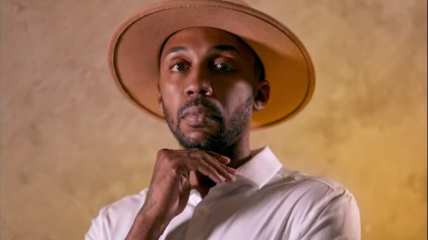Bans on diverse picture books? Young kids need to see their families represented, experts say
Educators and free-speech advocates said the books often simply acknowledge the existence of different identities.
When Wes Brown sought out children’s books for his two young sons, he made sure to seek titles that reflected the family he and his husband were building.
He found that in one called “The Family Book,” a 2003 picture book by Todd Parr. It depicts families of all kinds: the traditional nuclear family, but also families with one parent or step-parents, as well as adoptive families and same-sex parents like Brown and his husband.
But across the country, books and lessons that represent different families and identities are increasingly the target of conservative pushback — even when they’re for the youngest of learners. Parr’s book for preschoolers and early readers is often among those challenged by parents and activists.
“It is important my kids are definitely exposed to that,” Brown said. “What these parents are really doing is demonstrating how fragile their worldview is, that a children’s book is enough to shatter it.”
Efforts to ban books have been surging at school and public libraries. Of the bans targeting picture books, about three-quarters are books that address LGBTQ+ themes and roughly half are stories that mention race, said Kasey Meehan, Freedom to Read program director at PEN America.
“There’s legislation out there that could lead to felony offenses and criminalization, (teacher) decertification,” Meehan said. “When you see this threatening environment, more and more we see educators responding in an overly cautious approach, and that shows up in how they think about their classroom libraries.”
Objections to the titles often involve arguments that they are not age-appropriate. In some of the many challenges Parr’s book has faced over the years, opponents have taken issue with a line that reads, “Some families have two moms or two dads,” saying it was not suitable for young children.
Educators and free-speech advocates said the books often simply acknowledge the existence of different identities. That’s crucial, they say, to help young children develop empathy and an understanding of themselves — especially for children whose families include people of color or LGBTQ+ relatives.
The disputes have spilled over into classrooms. In Wake County, North Carolina, a preschool teacher resigned last year after an uproar over flashcards that depicted LGBTQ+ families, to teach colors based on the characters’ clothing.

In Alabama, Gov. Kay Ivey, a Republican, replaced the state’s early childhood learning director in April over the use of a guide for preschool teachers. The governor denounced the guide as teaching “woke concepts” because of language about inclusion and structural racism.
The book comes from the National Association for the Education of Young Children — the nonprofit professional association for early childhood education, which accredits daycares and preschools. The fourth edition of the group’s “Developmentally Appropriate Practice Book” says in part that children “begin to see how they are represented in society” in preschool and that the classroom should be a place of “affirmation and healing.”
The Alabama official’s ouster was the most prevalent example of how censorship and restrictions on teaching are extending beyond the K-12 sphere into early learning, said Leah Austin, president and CEO of the National Black Child Development Institute.
Research has found that children as young as 6 months old can perceive race-based differences. Limiting content denies children opportunities to learn about themselves, and to relate to other people, Austin said.
For young children, having access to books that interest them is also a crucial factor in becoming strong readers and battling disparities in literacy rates, said Michelle Martin, a youth and children’s services professor at the University of Washington. Although the diversity of children’s books has grown in recent years, representation is still lagging.
Martin recalled growing up in South Carolina, where her parents had to drink from segregated water fountains. As a child, she had little choice but to read books that depicted stories far removed from her experiences.
“There were really limited books that my generation had that reflected who we are,” she said. “Those books are beginning to be much more widely published, and those are the ones that are being targeted.”
In Florida, where Brown and his family live, Republican Gov. Ron DeSantis has pushed through legislation that bans mentions of gender identity and sexuality in classrooms for all grades, including public pre-K programs. Supporters of the law say parents, not teachers, should be broaching those subjects with their children.
For gay people of his generation, Brown recalled, building a family often felt like a remote possibility. When he and his husband first started dating in 2002, it was illegal in the state of Florida for gay couples to adopt a child.
“It was like a dream, but it’s a dream that’s so far off,” he said. “It’s like, ‘I want to fly like Superman.’ You don’t even really think it’s something you can have.”
The couple revisited the question in their 30s and decided to pursue adoption. Brown said he and his husband know it is inevitable for their sons, now ages 5 and 7, to encounter questions about having two dads.
“These laws are actually not meant to keep people from talking about sexuality,” he said “It is to prevent queer families from being talked about, the queer experience from being talked about. It is very much aimed at us.”
TheGrio is FREE on your TV via Apple TV, Amazon Fire, Roku, and Android TV. Please download theGrio mobile apps today!


